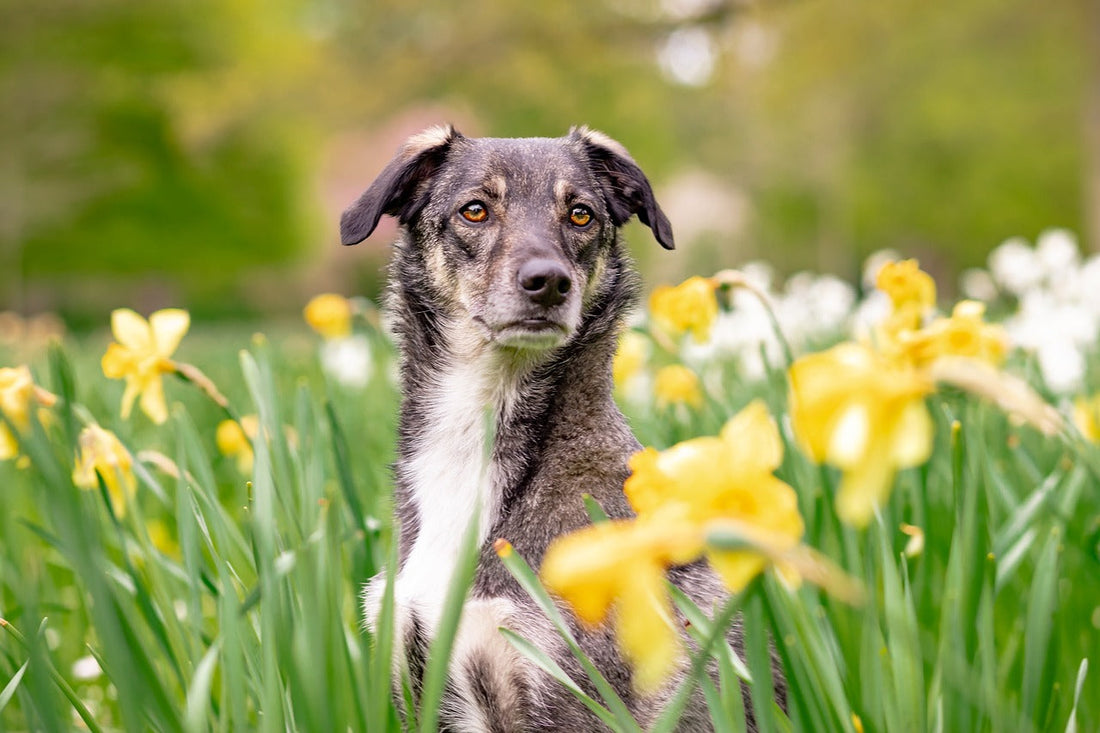Dogs are naturally curious creatures, often exploring the world with their noses and mouths. Unfortunately, this can sometimes lead them into danger—especially when it comes to plants. Many common household and garden plants are toxic to dogs and can cause anything from mild irritation to severe poisoning. As a responsible pet owner, knowing which plants to avoid can help keep your furry friend safe.
Common Poisonous Plants for Dogs
Indoor Plants to Watch Out For
If you love houseplants, be mindful that some of the most popular varieties are toxic to dogs. These include:
- Aloe Vera – While great for humans, aloe can cause vomiting, diarrhoea, and lethargy in dogs.
- Dieffenbachia (Dumb Cane) – Can cause severe mouth irritation, drooling, and difficulty swallowing.
- Pothos (Devil’s Ivy) – Causes irritation in the mouth and throat, leading to swelling and discomfort.
- Snake Plant (Sansevieria) – Can cause nausea, vomiting, and diarrhoea if ingested.
- ZZ Plant – All parts of this plant are toxic and can cause stomach upset and irritation.
Outdoor and Garden Plants to Avoid
Many beautiful garden plants can pose a serious risk to dogs. Some of the most dangerous include:
- Azaleas & Rhododendrons – Even a small amount can cause vomiting, diarrhoea, drooling, and potentially fatal heart issues.
- Oleander – Highly toxic, affecting the heart and leading to tremors, drooling, and possible fatality.
- Foxglove – Contains toxins that can cause irregular heartbeats and heart failure.
- Tulips & Daffodils – The bulbs are the most toxic part and can cause severe vomiting, diarrhoea, and even heart problems.
- Lilies – While extremely toxic to cats, some varieties can also cause stomach upset in dogs.
- Yew – Contains a deadly toxin that can cause sudden heart failure.
- Sago Palm – One of the most toxic plants for dogs, ingestion can lead to severe liver failure and even death.
Signs of Plant Poisoning in Dogs
If your dog has ingested a toxic plant, symptoms can vary based on the plant and the amount consumed. Look out for:
- Vomiting or diarrhoea
- Excessive drooling
- Lethargy or weakness
- Difficulty breathing
- Tremors or seizures
- Loss of coordination
- Swelling in the mouth or throat
If you notice any of these signs and suspect plant poisoning, contact your veterinarian immediately.
How to Keep Your Dog Safe
- Know what’s in your home and garden – Research any plant before bringing it into your home or yard.
- Create dog-safe spaces – Keep toxic plants out of reach, either by placing them on high shelves or using pet-friendly barriers.
- Supervise outdoor time – Keep an eye on your dog in unfamiliar areas, especially during walks in nature or visits to friends’ houses.
- Provide safe alternatives – Offer dog-friendly grass or herbs like wheatgrass or basil for chewing.
Dog-Friendly Plants
If you love greenery but want to keep things safe, consider these pet-friendly plants:
- Spider Plant
- Areca Palm
- Boston Fern
- Marigolds
- Rosemary
- Sunflowers
Final Thoughts
A beautiful home and garden don’t have to come at the expense of your dog’s safety. By choosing pet-friendly plants and staying informed, you can create a safe environment where both your greenery and your pup can thrive. If your dog ever eats something questionable, don’t hesitate—contact a vet immediately.

